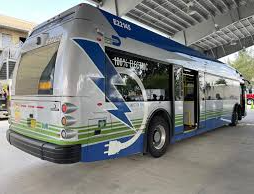Despite offering a free and fast river crossing, Transport for London’s Silvertown bike bus leaves riders questioning its practicality and long-term appeal
A new shuttle service allowing cyclists to cross under the Thames via the Silvertown tunnel has launched this week — free of charge, electrically powered, and designed to bridge a controversial gap in London’s active travel infrastructure. However, early impressions suggest that the so-called “bike bus” may not quite deliver on convenience.
The cycle shuttle, running every 12 minutes from 6.30am to 9.30pm daily, was introduced by Transport for London (TfL) as bicycles are not permitted within the Silvertown tunnel itself — a decision that has been met with frustration by many campaigners and cyclists. While the journey through the tunnel takes only a few minutes, the service’s limited bike capacity and fixed drop-off points are proving a deterrent for regular riders.
Three electric buses make up the fleet, each capable of carrying one cargo or adapted bicycle, up to four standard bikes and a few foldables. Yet, as Green Party Assembly Member Caroline Russell and London Cycling Campaign’s Tom Fyans discovered on Monday’s inaugural ride, the configuration can feel cramped and awkward — particularly for users with heavier or non-standard bikes.
Russell noted the difficulty of lifting her foldable cycle into the rack, while Fyans described the whole experience as “clunky” and “a bit of an afterthought”. Both expressed doubts over whether cyclists — typically drawn to cycling for its independence and immediacy — would be willing to wait for a bus that doesn’t take them directly to their destination.
The tunnel, which officially opened just after midnight on Monday, has already stirred debate due to its prioritisation of motorists over cyclists and pedestrians. Critics argue that, in 2025, omitting a route for active travel within a major infrastructure project feels outdated.
While TfL has invested nearly £2 million into the three-year contract for the shuttle, its future remains uncertain beyond the first year of free operation. Lorna Murphy, TfL’s director of buses, insists that the service will be adapted as needed and maintained for safety reasons — cycling and walking are prohibited within the tunnel itself.
Nonetheless, early usage suggests lukewarm reception. On the first day, some shuttle services ran with barely a single bike on board. For cyclists travelling to places like Canary Wharf or Abbey Wood, the shuttle’s rigid routing may not be appealing when compared to alternatives like the Elizabeth Line (off-peak only) or even the cable car, which is free to cyclists only during mornings.
As London continues to encourage sustainable travel, the Silvertown bike bus raises broader questions about infrastructure design and whether solutions intended to support cyclists truly meet their needs — or merely serve as compromises.








